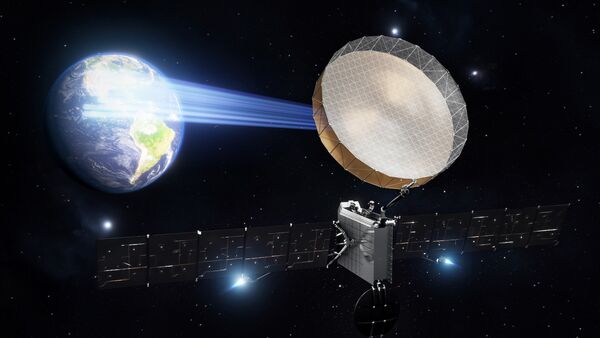
An artist's rendering of Astranis' Omega geosynchronous orbit satellite. (Astranis )
The US Space Force (USSF) and US Space Command (SPACECOM) have inked a joint deal with California-based space technology firm Astranis to upgrade the company's newest communications microsatellite, dubbed Omega, to transmit data across dedicated military Ka bands, service officials said.
USSF's Space Systems Command (SSC) and SPACECOM awarded Astranis a USD13.2 million contract, with USD3.3 million of SSC funding, to add military Ka-band frequency compatibility to their next-generation Omega microsatellites. This jointly funded Strategic Funding Increase (STRATFI) will have support from SSC, SpaceWERX, and other venture capital sources.
The addition of Ka-band capability to the Omega satellite will “ensure compatibility with existing military user equipment and frequency plans”, according to an SSC statement issued in September.
“The targeted mission impact for the Astranis project is to significantly enhance the resiliency of tactical satellite communications for the US Department of Defense (DoD) and USSF for assuring beyond-line-of-sight connectivity across warfighters, sensors, and weapons systems in contested space and radio frequency scenarios,” Charlotte Gerhart, chief of Tactical Satcom Acquisition Delta, said in the statement.
Unveiled in April, the Omega platform is the latest MicroGEO satellite in Astranis' portfolio. A stationary communications microsatellite operating at geosynchronous orbit (GEO), the Omega is designed to provide a data transmission rate of upwards of 50 Gbps.
This transmission rate dwarfs the 10–12 Gpbs rate that is standard for Astranis' current slate of communication microsatellites. The Omega is also roughly 440 lb (200 kg) larger than any of the company's current MicroGEO platforms. However, despite its size and capacity, the anticipated eight-to-10-year-lifespan for the Omega MicroGEO satellite is still almost 10 years less than the over 20-year projected lifespan of full-size GEO satellite communication (satcom) systems.
Looking to read the full article?
Gain unlimited access to Janes news and more...



